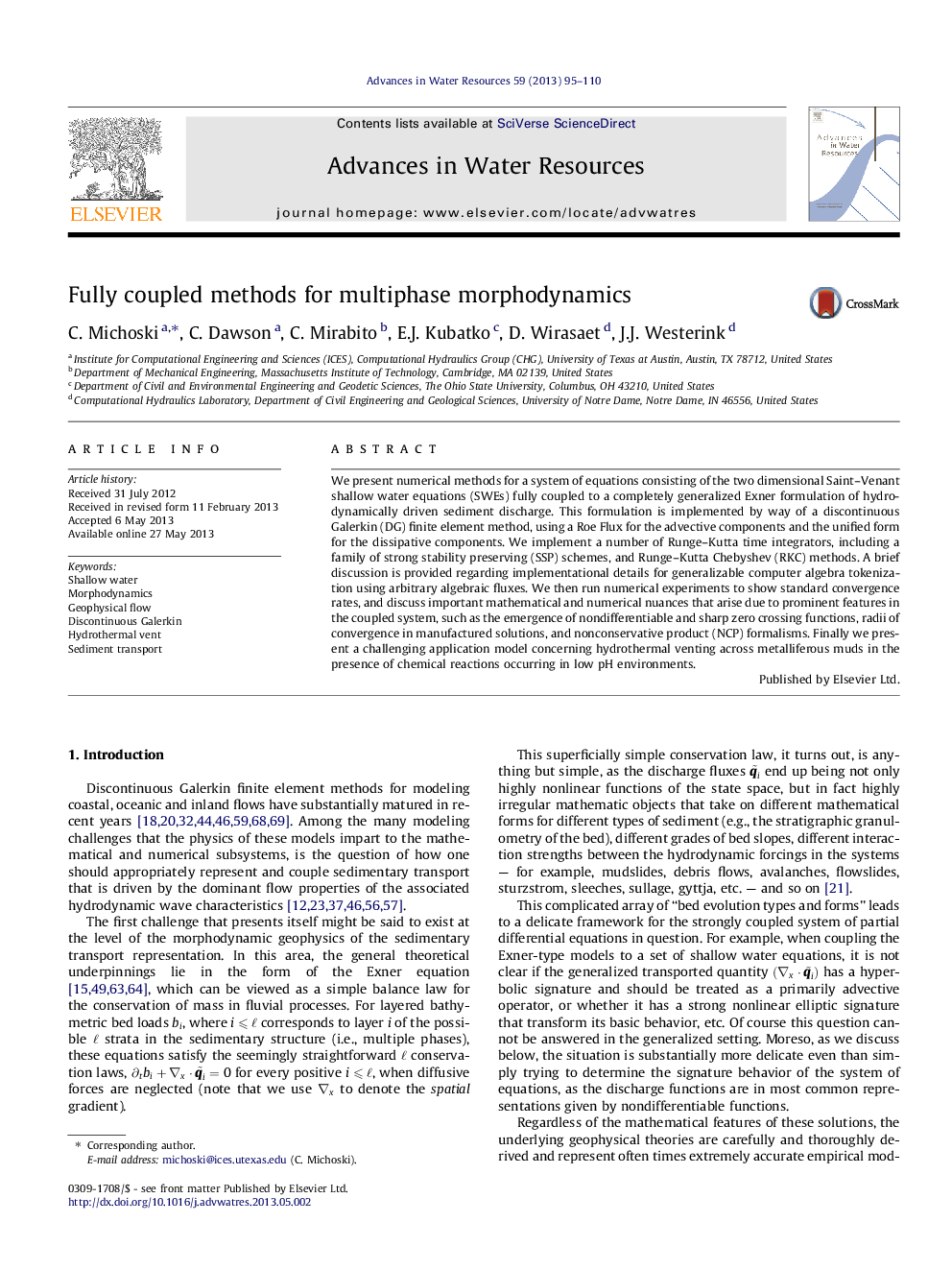| Article ID | Journal | Published Year | Pages | File Type |
|---|---|---|---|---|
| 4525683 | Advances in Water Resources | 2013 | 16 Pages |
•Multilayer morphodynamics in shallow water.•Fully coupled Roe solvers in a discontinuous Galerkin framework.•Generalized sediment discharge implementations.•Numerical convergence and analysis.•Convergent channel validation, hydrothermal vent robustness tests.
We present numerical methods for a system of equations consisting of the two dimensional Saint–Venant shallow water equations (SWEs) fully coupled to a completely generalized Exner formulation of hydrodynamically driven sediment discharge. This formulation is implemented by way of a discontinuous Galerkin (DG) finite element method, using a Roe Flux for the advective components and the unified form for the dissipative components. We implement a number of Runge–Kutta time integrators, including a family of strong stability preserving (SSP) schemes, and Runge–Kutta Chebyshev (RKC) methods. A brief discussion is provided regarding implementational details for generalizable computer algebra tokenization using arbitrary algebraic fluxes. We then run numerical experiments to show standard convergence rates, and discuss important mathematical and numerical nuances that arise due to prominent features in the coupled system, such as the emergence of nondifferentiable and sharp zero crossing functions, radii of convergence in manufactured solutions, and nonconservative product (NCP) formalisms. Finally we present a challenging application model concerning hydrothermal venting across metalliferous muds in the presence of chemical reactions occurring in low pH environments.
